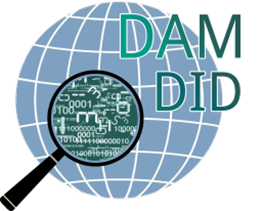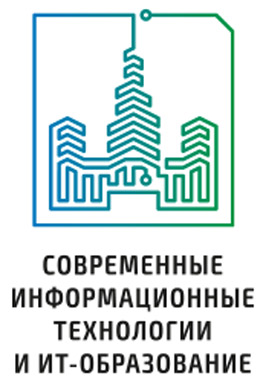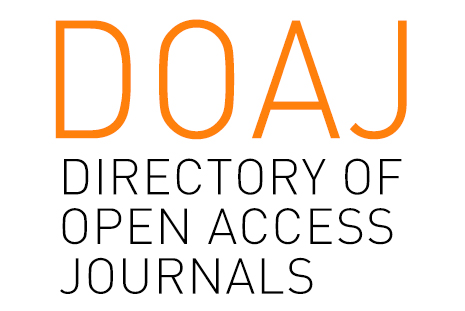МОДЕЛЬ ФУНКЦИОНИРОВАНИЯ ТЕЛЕКОММУНИКАЦИОННОГО ОБОРУДОВАНИЯ ПРОГРАММНО-КОНФИГУРИРУЕМЫХ СЕТЕЙ
Аннотация
Строится математическая модель функционирования коммутатора программно-конфигурируемой сети в виде сети массового обслуживания, состоящей из двух систем массового обслуживания: первая моделирует входной буфер данных и устройство считывания информации из заголовка пакета, вторая – таблицу адресации коммутатора программно-конфигурируемой сети. Поступление данных в программно-конфигурируемых сетях имеет вероятностный характер при их детерминированной обработке в каналах связи и узлах коммутации. Поэтому данная математическая модель функционирования коммутатора программно-конфигурируемой сети была построена на основе систем и сетей массового обслуживания. Поступающий в сеть поток заявок был разделен на два пуассоновских потока разнотипных заявок, первый из которых соответствуют пакетам, приходящие на управляющий порт коммутатора (от контроллера), а второй поток - остальным прибывающим на коммутатор пакетам. Поток, соответствующий пакетам, приходящих на коммутатор от контроллера, имеет относительный приоритет над потоком из остальных прибывающих пакетов. В результате были получены формулы для расчета показателей производительности данного телекоммуникационного оборудования, такие как средние длины очередей ожидания приоритетных и неприоритетных заявок, среднее время ожидания заявок в очереди, вероятность потерь заявок на каждой фазе модели функционирования коммутатора. На основании полученных показателей качества функционирования данного телекоммуникационного оборудования можно дать оценку устойчивости телекоммуникационного оборудования программно-конфигурируемых сетей на различные информационные воздействия.
Литература
[2] Malakhov S.V., Tarasov V.N., Kartashevsky I.V. Theoretical and experimental study of delay in software defined networks. Infokommunikacionnye tehnologii. 2015; 13(4):409-413. (In Russian) DOI: https://doi.org/10.18469/ikt.2015.13.4.08
[3] Smelyanskiy R.L. Software defined networks. Open Systems. DBMS. 2012; 9:15-26. Available at: https://www.osp.ru/os/2012/09/13032491/ (accessed 10.02.2018). (In Russian)
[4] Vishnevskiy V. Theoretical foundations of computer network design. Moscow: The Technosphere, 2003. 512 p. (In Russian)
[5] Smelyanskiy R. Computer networks. M.: Publishing Center «Academy», 2011. 240 p. (In Russian)
[6] Bahareva N., Tarasov V. Approximation methods and queuing models. Research of computer networks. Samara: Publishing house of the SSC RAS, 2011. 327 p. (In Russian)
[7] Tarasov V.N., Malakhov S.V. Statistical data handling program of Wireshark analyzer and incoming traffic research. Trudy ISP RАN [The Proceedings of ISP RAS]. 2015; 27(3):303-314. Available at: https://elibrary.ru/item.asp?id=23832950 (accessed 10.02.2018).
[8] Tatang D., Quinkert F., Frank J., Ropke C., Holz T. SDN-Guard: Protecting SDN controllers against SDN rootkits. Proceedings of 2017 IEEE Conference on Network Function Virtualization and Software Defined Networks (NFV-SDN). Berlin, Germany, 2017. p. 297 – 302. DOI: https://doi.org/10.1109/NFV-SDN.2017.8169856
[9] Pujolle G. SDN (Software-Defined Networking). Vol. 1. Software Networks: Virtualization, SDN, 5G and Security. UK: ISTE Ltd; USA: John Wiley & Sons, Inc., 2015. 232 p. DOI: https://doi.org/10.1002/9781119005100
[10] Shao Y.Zh., Scott-Hayward S., Jacquin L., Hill R. Guide to Security in SDN and NFV: Challenges, Opportunities, and Applications. Cham: Springer International Publishing, 2017. 331 p.
[11] Nadeau T.D., Gray K. SDN: Software Defined Networks. O'Reilly Media, Inc. 2013. 384 p.
[12] Azodolmolky S. Software Defined Networking with Openflow: Get Hands-on with the Platforms and Development Tools Used to Build Openflow Network Applications. Packt Publishing, Birmingham – Mumbai, 2013. 138 p.
[13] Fei H. Network Innovation Through Openflow and Sdn: Principles and Design. CRC P Inc, Taylor & Francis Group, 2014. 520 p.
[14] Alaauddin Sh. Application Layer Firewall Using OpenFlow. Interdiscipilinary Telecommunications Graduate Theses Dissertations, 2014. 69 p. Available at: https://scholar.colorado.edu/cgi/viewcontent.cgi?article=1000&context=tlen_gradetds (accessed 10.02.2018).
[15] Coker O., Azodolmolky S. Software-defined Networking with Openflow - Second Edition. Packt Publishing, Limited, 2017. 246 р.
[16] Gerrity A., Hu F. SDN/OpenFlow: Concepts and Applications // Network Innovation through OpenFlow and SDN / Hu Fei. Taylor & Francis Group, LLC, 2014. Chapter 1. p. 3-16. DOI: https://doi.org/10.1201/b16521-3
[17] Agouros K. Software Defined Networking. SDN-Praxis mit Controllern und OpenFlow. De Gruyter, 2016. p. 26–48. DOI: https://doi.org/10.1515/9783110451870-003
[18] Agouros K. Software Defined Networking. OpenFlow-Implementierungen. De Gruyter, 2016. p. 49-70. DOI: https://doi.org/10.1515/9783110451870-004
[19] Karyotis V., Khouzani M.H.R. Appendix B – Elements of queuing theory and queuing networks, In Malware Diffusion Models for Wireless Complex Networks, Morgan Kaufmann, Boston, 2016. p. 235-254. DOI: https://doi.org/10.1016/B978-0-12-802714-1.00023-2
[20] Wang S., Lee I. MiniReal: A real SDN network testbed built over an SDN bare metal commodity switch. Proceedings of 2017 IEEE International Conference on Communications (ICC). Paris, France, 2017. p. 1-6. DOI: https://doi.org/10.1109/ICC.2017.7997283
[21] Huang M., Liang W. Incremental SDN-Enabled Switch Deployment for Hybrid Software-Defined Networks. Proceedings of the 26th International Conference on Computer Communication and Networks (ICCCN). Vancouver, BC, Canada, 2017. p. 1-6. DOI: https://doi.org/10.1109/ICCCN.2017.8038498
[22] Goransson P., Black C., Culver T. Software defined networks: A comprehensive approach. 2nd Edition. Elsevier, 2016. 436 p.
[23] Wang H., Schmitt J. Load balancing - towards balanced delay guarantees in NFV/SDN. Proceedings of 2016 IEEE Conference on Network Function Virtualization and Software Defined Networks (NFV-SDN). Palo Alto, CA, USA, 2016. p. 240 – 245. DOI: https://doi.org/10.1109/NFV-SDN.2016.7919504
[24] Ndonda G.K., Sadre R. A low-delay SDN-based countermeasure to eavesdropping attacks in industrial control systems. Proceedings of 2017 IEEE Conference on Network Function Virtualization and Software Defined Networks (NFV-SDN). Berlin, Germany, 2017. p. 1-7. DOI: https://doi.org/10.1109/NFV-SDN.2017.8169840

Это произведение доступно по лицензии Creative Commons «Attribution» («Атрибуция») 4.0 Всемирная.
Редакционная политика журнала основывается на традиционных этических принципах российской научной периодики и строится с учетом этических норм работы редакторов и издателей, закрепленных в Кодексе поведения и руководящих принципах наилучшей практики для редактора журнала (Code of Conduct and Best Practice Guidelines for Journal Editors) и Кодексе поведения для издателя журнала (Code of Conduct for Journal Publishers), разработанных Комитетом по публикационной этике - Committee on Publication Ethics (COPE). В процессе издательской деятельности редколлегия журнала руководствуется международными правилами охраны авторского права, нормами действующего законодательства РФ, международными издательскими стандартами и обязательной ссылке на первоисточник.
Журнал позволяет авторам сохранять авторское право без ограничений. Журнал позволяет авторам сохранить права на публикацию без ограничений.
Издательская политика в области авторского права и архивирования определяются «зеленым цветом» в базе данных SHERPA/RoMEO.
Все статьи распространяются на условиях лицензии Creative Commons «Attribution» («Атрибуция») 4.0 Всемирная, которая позволяет другим использовать, распространять, дополнять эту работу с обязательной ссылкой на оригинальную работу и публикацию в этом журналe.













